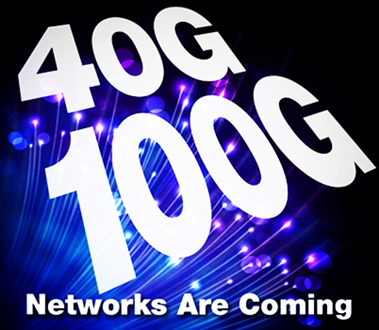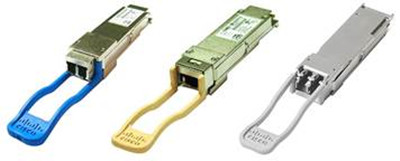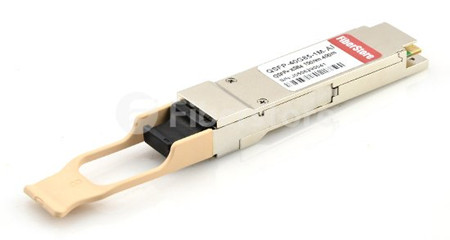40 Gigabit Ethernet is a new generation of high-speed, high-demand, computing technologies. The market driver for 40/100 Gigabit Ethernet is becoming inescapably compelling. In order to handling this, new optical technology and cabling infrastructure are required. This article addresses the impending move to 40 Gigabit Ethernet and 40 Gigabit optical transceiver modules.
Migrating to 40 Gigabit Ethernet
10 Gigabit Ethernet is still paving its way into data center, but CIOs and IT professionals must consider the increasing requirement by subscribers for more bandwidth and high speed applications. The debate over 10 Gigabit Ethernet and 40 Gigabit Ethernet is fast becoming moot as 40G Ethernet can be commonly applied to access links to connect servers and provides design flexibility and cost advantage over 100 Gigabit Ethernet. 40 Gigabit Ethernet is undoubtedly the next logical step in the evolution of the data network.
10 Gigabit Ethernet is still paving its way into data center, but CIOs and IT professionals must consider the increasing requirement by subscribers for more bandwidth and high speed applications. The debate over 10 Gigabit Ethernet and 40 Gigabit Ethernet is fast becoming moot as 40G Ethernet can be commonly applied to access links to connect servers and provides design flexibility and cost advantage over 100 Gigabit Ethernet. 40 Gigabit Ethernet is undoubtedly the next logical step in the evolution of the data network.

40 Gigabit Ethernet and 100 Gigabit Ethernet are groups of computing networking technology defined by the IEEE 802.3ba standard to support sending Ethernet frames at 40 and 100 gigabits per second. Official development of the 40 Gigabit Ethernet and 100 Gigabit Ethernet standards began in January 2008, and the standards were officially ratified in June 2010. They also address physical layer specifications for communication across backplanes, copper cabling, multi-mode fiber, and single-mode fiber.
The heart of the 40 Gigabit Ethernet network layer is a pair of transceivers. These transceivers, in turn, are plugged into either network servers or a variety of components including interface cards and switches. There are commonly three types of 40GbE transceiver modules, namely QSFP+, CXP and CFP. Today, we are going to focus on QSFP+ transceiver modules.
A Closer Look at 40G QSFP+ Optical Modules
The Quad Small-Form-Factor Pluggable (QSFP) is similar in size to the CXP and CFP which provides four transmit and four receive lanes to support 40 Gigabit Ethernet applications. It offers customers high-density and low-power 40 Gigabit Ethernet connectivity options for data center, high-performance networks, and server provider application. 40G QSFP+ optical module is the key component in fiber optic transmission. The common interfaces of 40G QSFP+ transceiver modules, as Figure 2 indicates, are 40GBASE-LR4, 40GBASE-SR4 and 40GBASE-LR4 PSM in QSFP+ form factor.
The Quad Small-Form-Factor Pluggable (QSFP) is similar in size to the CXP and CFP which provides four transmit and four receive lanes to support 40 Gigabit Ethernet applications. It offers customers high-density and low-power 40 Gigabit Ethernet connectivity options for data center, high-performance networks, and server provider application. 40G QSFP+ optical module is the key component in fiber optic transmission. The common interfaces of 40G QSFP+ transceiver modules, as Figure 2 indicates, are 40GBASE-LR4, 40GBASE-SR4 and 40GBASE-LR4 PSM in QSFP+ form factor.

- 40GBASE-LR4 QSFP+
40GBASE-LR4 transceiver supports a link lengths of up to 10km over 1310nm single-mode fiber with LC connector, which is most commonly deployed between data center or IXP sites. Take QSFP-40GE-LR4 as an example, it is fully compatible with Cisco 40GBASE-LR4 QSFP+ Transceiver. It primarily enables high-bandwidth 40G optical links and can also be used in a 4x10G module for interoperability with 10GBASE-LR interfaces.
- 40GBASE-SR4 QSFP+
40GBASE-SR4 transceiver supports a link lengths of up to 100 meters on OM3 and 150m on OM4 over 850nm multi-mode fiber, MPO Connector. 40GBASE-SR transceivers are mainly used in data center to interconnect two Ethernet switches with 8 fiber parallel multi-mode fiber OM3/OM4 cables. Take a look at the JG325A (see in Figure 3), it is provided at Fiberstore with high-quality and low cost.

- 40GBASE-LR4 PSM QSFP+
40G LR4 Parallel Single Mode (PSM) transceivers support up to 10 kilometers over single-mode fiber using an 8 parallel fiber MPO interface. Each fiber pair can be broken out to a 10Gb Ethernet connection, compatible with up to four 10GBASE-LR interfaces.
Conclusion
Migrating to 40/100 Gigabit Ethernet is relatively smooth today for IT professionals. Just don’t forget to utilize a suitable QSFP+ transceiver modules for your infrastructure. Fiberstore supports a full range of both copper cables and optical transceivers for 40GbE, compliant to the IEEE standards. For copper both QSFP+ to QSFP+ (40G to 40G) and QSFP+ to SFP+ (40G to 4x10G) cables enable short reach options. For longer distances we offer a wide range of optical transceivers for various fiber types and reach requirements.
Migrating to 40/100 Gigabit Ethernet is relatively smooth today for IT professionals. Just don’t forget to utilize a suitable QSFP+ transceiver modules for your infrastructure. Fiberstore supports a full range of both copper cables and optical transceivers for 40GbE, compliant to the IEEE standards. For copper both QSFP+ to QSFP+ (40G to 40G) and QSFP+ to SFP+ (40G to 4x10G) cables enable short reach options. For longer distances we offer a wide range of optical transceivers for various fiber types and reach requirements.
评论
发表评论